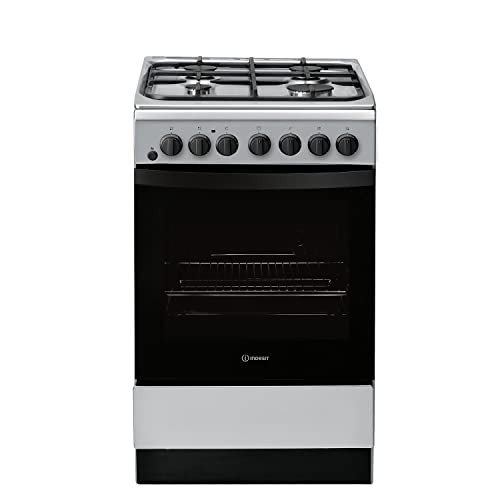How To Solve Issues Related To Oven Hob

Understanding Oven Hobs: The Heart of Culinary Crafting
In the realm of contemporary kitchen areas, the oven hob stands apart as an indispensable appliance. Not just is it a central element for preparing a variety of meals, but it likewise affects kitchen looks, functionality, and efficiency. This article digs into the types of oven hobs, their functions, advantages, and maintenance pointers. Furthermore, it attends to some often asked questions to supply an extensive understanding of this vital kitchen appliance.
Types of Oven Hobs
Oven hobs can be classified into several types based upon their energy source and style. Comprehending these variations can assist consumers make informed decisions when selecting the perfect hob for their kitchen requires.
1. Gas Hobs
Gas hobs use gas or gas as fuel, providing accurate temperature control and rapid heat. They are preferred by many chefs for their ability to offer visual feedback through flame.
Pros:
- Quick heat-up time.
- Accurate temperature changes.
- Suitable with all kinds of pots and pans.
Cons:
- Requires a continuous gas supply.
- Security issues with open flames.
- Requires more upkeep.
2. Electric Hobs
Electric hobs are powered by electricity and feature smooth glass or ceramic surfaces. They frequently come in two types: coil and strong.
Pros:
- Sleek appearance.
- No open flames, reducing security threats.
- Easy to clean.
Cons:
- Slower to warm up and cool off.
- May need specific cookware (induction).
- Some may have irregular heat circulation.
3. Induction Hobs
Induction hobs use electromagnetic energy to directly heat pots and pans. They only deal with ferromagnetic pots and pans.
Pros:
- Very energy-efficient.
- Fast heating & cooling times.
- Safe, as the surface area remains fairly cool.
Cons:
- Limited to specific types of pots and pans.
- Greater preliminary expense.
- Can produce sound when in usage.
4. Solid Plate Hobs
These electric hobs feature strong metal plates that warm up and retain heat for cooking.
Pros:
- Durable and reliable.
- Uncomplicated operation.
Cons:
- Takes time to heat up.
- Less efficient than induction and gas models.
| Hob Type | Heat Source | Aesthetic appeals | Upkeep |
|---|---|---|---|
| Gas Hobs | Gas | Standard | Moderate |
| Electric Hobs | Electrical energy | Modern/Sleek | Low |
| Induction Hobs | Electro-magnetic | Contemporary | Low |
| Strong Plate Hobs | Electrical power | Traditional | Typical |
Functions to Consider When Choosing an Oven Hob
When selecting the ideal oven hob for your kitchen, there are numerous important features to take into consideration. These consist of:
- Size: Ensure the hob fits the designated area in your kitchen.
- Variety of Burners: Consider your cooking design and the number of burners you'll need.
- Control Type: Look for easy to use controls, whether touch-sensitive or knobs.
- Safety Features: Many contemporary hobs include precaution like flame failure gadgets or kid locks.
- Energy Efficiency: Choose energy-efficient designs to minimize energy bills and lower your ecological effect.
Advantages of Using an Oven Hob
The oven hob supplies a number of advantages that cater to both amateur cooks and professional chefs. Here are some key advantages:
- Versatility: Whether boiling, frying, simmering, or sautéing, an oven hob accommodates numerous cooking methods.
- Convenience: Many hobs included additional functions like timers and automatic shut-off systems for included benefit in hectic cooking areas.
- Improved Cooking Control: The immediate heat reactions of gas and induction hobs enable much better control over cooking temperatures.
- Style Enhancement: Modern hobs can improve the general visual of a kitchen, including a modern touch.
Maintenance Tips for an Oven Hob
To ensure the longevity and efficiency of an oven hob, proper maintenance is vital. Here are some maintenance suggestions:
Regular Cleaning:
- Use a soft cloth and mild cleaning agent to clean surface areas after each use.
- For induction and ceramic hobs, prevent abrasive cleaners to avoid scratching.
Look for Wear and Tear:
- Inspect rubber seals and connections in gas hobs routinely for any damages or leakages.
- Guarantee electrical connections are secure in electric hobs.
Expert Servicing:
- Schedule routine upkeep checks with a qualified professional to prevent significant concerns.
The oven hob is a vital element in any kitchen, functioning as a centerpiece for culinary ventures. Whether selecting gas, electric, or induction, comprehending the different types, features, and upkeep requirements is important for making a knowledgeable decision. A well-chosen hob not just improves cooking performance however likewise enhances the overall kitchen experience.
Regularly Asked Questions (FAQs)
1. What type of hob is best for a beginner?
Electric hobs are often favored by beginners due to their ease of usage and maintenance.
2. Can I utilize all pots and pans on an induction hob?
No, induction hobs require ferromagnetic pots and pans for them to work effectively.
3. How do I understand if my gas hob is working efficiently?
Frequently look for even flame distribution and listen for any hissing noises that may indicate leaks. If in doubt, speak with an expert.
4. Is a higher rate constantly better for hobs?
Not always. While higher-priced models may use innovative features, a number of mid-range products offer outstanding efficiency and longevity.
5. Can I install a hob myself?
It is advisable to employ a professional, particularly for gas hobs, due to safety concerns and regional policies.
By comprehending the subtleties of oven hobs, home cooks can make a well-informed decision that lines up with their culinary aspirations and kitchen designs. Selecting the ideal hob enhances both the cooking experience and kitchen looks, making it a crucial financial investment for any home.

